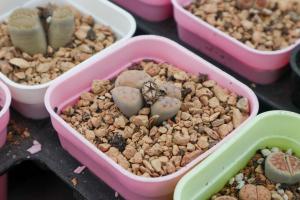When to Plant Fruit Trees in Fall
Fall is a great time to plant fruit trees, as the cooler temperatures and reduced sunlight stress on the plants make it easier for them to establish themselves. However, timing is important when it comes to planting fruit trees in the fall.
Choosing the Right Time to Plant
The best time to plant fruit trees in the fall is after the first frost but before the ground freezes. This usually occurs in late October through early December, depending on your location. Planting during this time allows the trees to establish their roots before the winter weather sets in.
It is important to avoid planting too early in the fall, as warm temperatures can lead to new growth that will be damaged by freezing temperatures. On the other hand, planting too late in the fall may not allow the trees enough time to establish themselves before the ground freezes.
Preparing the Soil
Before planting your fruit trees, it is important to prepare the soil. Dig a hole about two times wider than the tree's root ball and just as deep. Mix in compost, aged manure, or other organic matter to improve the soil's fertility and drainage.
It is also a good idea to have the soil tested to determine its pH level. Many fruit trees prefer slightly acidic soil, with a pH between 6.0 and 6.5.
Choosing the Right Location
The location of your fruit trees is also important. Choose a spot that gets full sunlight for at least six hours a day, as fruit trees need plenty of light to produce fruit. Avoid planting near buildings or other structures that may shade the trees.
Make sure the spot you choose also has good drainage, as fruit trees do not do well in standing water. Avoid planting in low-lying areas or areas where water tends to pool.
Planting and Care Tips
When planting your fruit trees, be sure to set them in the hole at the same depth they were planted in their container. Backfill the hole with soil and water the tree deeply. Mulch around the base of the tree to retain moisture and suppress weed growth.
During the first year after planting, be sure to keep the soil around the tree evenly moist. Fruit trees also benefit from regular fertilization and pruning to promote healthy growth and fruit production.
Conclusion
Planting fruit trees in the fall is a great way to give them a head start in establishing their roots before winter. By choosing the right time to plant, preparing the soil, choosing the right location, and following proper planting and care tips, you can enjoy a bountiful harvest of fresh fruit for years to come.

 how many times do yo...
how many times do yo... how many planted tre...
how many planted tre... how many pine trees ...
how many pine trees ... how many pecan trees...
how many pecan trees... how many plants comp...
how many plants comp... how many plants can ...
how many plants can ... how many plants and ...
how many plants and ... how many pepper plan...
how many pepper plan...































